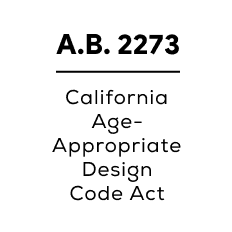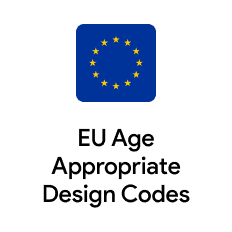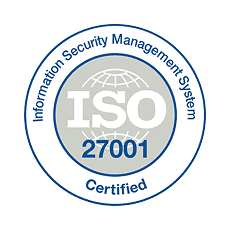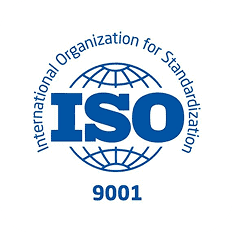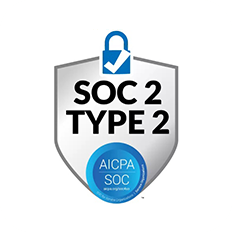Introduction
PrivateID is built for seamless, interoperable identity authentication with complete privacy at its core. Its edge-based architecture and patented tokenization ensure biometric data never leaves the device, enabling scalable, compliant, and frictionless authentication across industries.
Luxand FaceSDK is a multi-platform facial recognition software library used to embed on-device face detection, recognition, and anti-spoofing in web, desktop, and mobile apps. FaceSDK runs locally (with an optional Luxand.Cloud API for hosted processing), using conventional biometric templates and developer-managed databases. This puts data control on customers, but also places privacy, compliance, and scaling tradeoffs on the implementer.
1. Architecture
PrivateID: Performs 1:1 biometric matching directly at the device edge. Biometric data and PII remain securely on the device, preserving privacy while eliminating data breach risks and simplifying global compliance.
Luxand FaceSDK: A local SDK for Windows, Linux, macOS, iOS, Android, WebAssembly, and more. Developers embed FaceSDK and manage storage of face templates and galleries themselves (or use Luxand.Cloud for a hosted API). No homomorphic tokenization; standard vectors/templates are used.
2. Privacy & Tokenization
PrivateID: Uses patented Homomorphic Tokenization, transforming biometrics into irreversible, anonymized tokens. Tokens are unique, cannot be reverse-engineered, IEEE 2410 compliant, and exempt from global biometric privacy obligations under GDPR, CCPA, BIPA, and HIPAA. No biometric data or templates are transmitted.
Luxand FaceSDK: Uses conventional biometric templates that customers store and process locally or via Luxand.Cloud. Compliance and breach risk depend on customer implementation and safeguards; the SDK does not provide tokenization that removes biometrics from scope.
3. 1:1 vs 1:N Matching
PrivateID:
•1:1: Edge-based; no images or biometric data ever leave the device.
•1:N: Only anonymized tokens—not images or templates—are transmitted to the server, enabling privacy-preserving, efficient 1:N searches with constant-time lookups (~5 ms) regardless of gallery size.
Luxand FaceSDK: Supports both verification (1:1) and identification (1:N) by comparing face templates against developer-managed galleries. Matching speed is high but scales with gallery size (Luxand cites ~53M comparisons/sec on a Ryzen 5 class CPU), so performance and cost depend on hardware and database size.
4. Multi-Modal Biometrics
PrivateID: Supports facial, voice, palm, and fingerprint biometrics combined with Passkeys and additional identity signals (geolocation, Wi-Fi sniffing, device fingerprinting) to enable risk-based authentication from any camera- or microphone-enabled device.
Luxand FaceSDK: Primarily facial recognition and attributes (age, gender, expression), with SDK support for face detection/recognition and tracking. Broader multi-modal identity (voice, fingerprint, etc.) is not native to FaceSDK.
5. Liveness Detection (PAD)
PrivateID: On-device advanced anti-spoofing against photos, masks, screens, and deepfakes, all without transmitting biometric data. Protects privacy and eliminates regulatory and breach risks.
Luxand FaceSDK: Offers passive and active liveness detection (and optional thermal integration). Luxand provides an iBeta-certified Liveness add-on (Level 1 PAD for the SDK), and Luxand.Cloud advertises Level 1 & Level 2 PAD certifications. Implementation still requires storing/processing templates unless customers architect otherwise.
6. Scalability & Efficiency
PrivateID: Unlimited scalability with consistent performance. A 5 MB image is reduced to a ~1 KB token, cutting bandwidth and processing costs while delivering constant ~5 ms performance across unlimited gallery sizes.
Luxand FaceSDK: Scales with local compute and database throughput. Luxand cites high per-CPU comparison rates, but 1:N performance degrades linearly with gallery size unless customers build sharding, indexing, or distribution layers. Storage and bandwidth characteristics depend on how templates and images are managed.
7. Accuracy
PrivateID: Achieves 99.999% accuracy across unlimited gallery sizes, with privacy-preserving tokenization preventing bias amplification. (NIST FRVT leader.)
Luxand FaceSDK: Luxand participates in NIST FRVT with a current algorithm (“luxand_001”), and has public announcements highlighting results. Actual rankings vary by track/metric; customers should review the NIST report card for their use case.
8. Compliance & Security
PrivateID: Performs biometric processing on-device (1:1) and with homomorphic tokenization (1:N), inherently complying with GDPR, CCPA, HIPAA, and BIPA. Annually certified to IEEE 2410 for biometric processing. No biometric data is ever stored or transmitted.
Luxand FaceSDK: Provides local SDK components; compliance responsibilities (GDPR/CCPA/BIPA/HIPAA) remain with the customer. Templates/images are typically in scope unless customers design an architecture that minimizes or eliminates personal data handling.
9. Deployment & Integration
PrivateID: Lightweight SDK/API for rapid deployment across IAM, healthcare, retail, and finance. Runs on general-purpose hardware—desktops, mobile devices, and POS terminals—without requiring cloud dependency.
Luxand FaceSDK: Broad platform coverage (Windows, Linux, macOS, iOS, Android, WebAssembly, .NET, Java, Python, Flutter, React Native) with sample apps. Optional Luxand.Cloud API available for hosted workflows. Vendor lock-in is lower than a single-cloud service, but customers must manage their own infra and data pipelines.
10. Ethics & Trust
PrivateID: Purpose-built for user-consented, privacy-preserving identity verification in enterprise and consumer authentication workflows.
Luxand FaceSDK: A general-purpose facial recognition SDK. Ethical posture and governance depend on developer usage and policy controls; FaceSDK itself does not enforce consent or privacy patterns beyond what customers implement. (Luxand provides liveness and masking features but governance remains customer-defined.)
11. Cost & Total Cost of Ownership (TCO)
PrivateID: Edge and token-based architecture reduces compute, bandwidth, and storage costs by orders of magnitude. Minimal infrastructure lowers long-term TCO.
Luxand FaceSDK: Per-license SDK pricing (and optional cloud usage) with costs tied to developer-managed compute, storage, and gallery size. High local matching speeds help, but TCO scales with your database, storage of templates/images, and operational hardening for privacy and compliance.
12. Latency & User Experience
PrivateID: Delivers constant ~100 ms performance for real-time authentication at any scale, optimized for seamless user experiences.
Luxand FaceSDK: On-device/edge inference can be low-latency. For 1:N, latency depends on gallery size, indexing, and hardware. Cloud usage (Luxand.Cloud) introduces network round-trips.
13. Deployment Flexibility
PrivateID: Fully edge-capable for 1:1, hybrid edge-to-server for 1:N with tokenization. No vendor lock-in; supports cloud, on-prem, and hybrid environments.
Luxand FaceSDK: Flexible SDK that runs on edge devices and servers, with optional cloud API. Does not provide native tokenized 1:N; customers design storage, search, and privacy controls.
14. Ecosystem & Interoperability
PrivateID: Standards-based (IEEE 2410, FIDO2) interoperability with IAM, MFA, Passkeys, and RBA solutions across industries.
Luxand FaceSDK: Rich language and platform bindings (C/C++, .NET, Java, Python, Flutter, React Native, WebAssembly), plus camera/Tracker APIs and attributes. Interoperability is SDK-level rather than identity-standards-level.
15. Bias & Fairness
PrivateID: Tokenization removes demographic identifiers, reducing the risk of bias and improving fairness across populations.
Luxand FaceSDK: Traditional image/template-based pipelines can reflect dataset and model biases. FRVT participation provides third-party benchmarking signals, but fairness outcomes depend on customer datasets, thresholds, and governance.
16. Business & Market Positioning
PrivateID: Designed for enterprises, healthcare, finance, and retail requiring privacy-first, compliant, and scalable biometric identity solutions.
Luxand FaceSDK: A commercial SDK aimed at developers and enterprises seeking embeddable facial recognition with optional liveness and attribute detection, deployable on-device or via a hosted API. Less opinionated about identity/authentication workflows, leaving policy and compliance to implementers.
Summary
PrivateID provides a privacy-first biometric platform that performs 1:1 matching at the device edge and uses patented homomorphic tokenization for scalable 1:N searches. Biometric data never leaves the device, ensuring constant-time performance, unlimited scalability, multi-modal authentication, built-in compliance, and lower costs.
Luxand FaceSDK is a versatile, on-device facial recognition SDK with optional cloud services and iBeta-certified liveness options. It offers strong developer flexibility and high local performance, but it relies on traditional biometric templates and customer-managed galleries—so privacy, compliance, scalability, and cost controls depend on your architecture rather than being inherent to the product.









